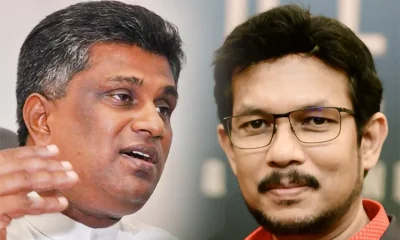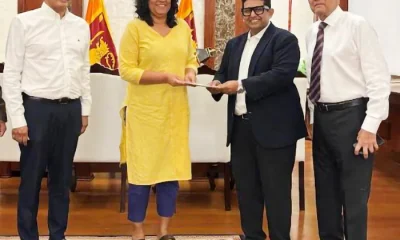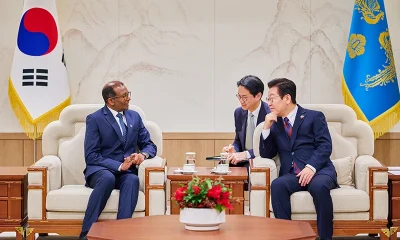Features
Improvements to Kelani Valley Railway – A response from a laymon
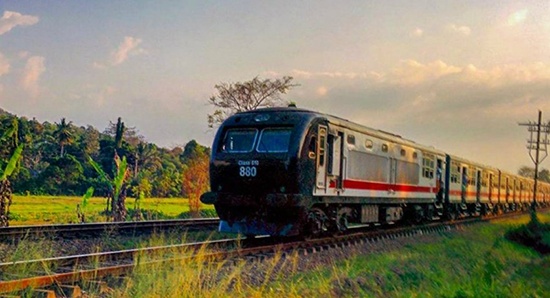
BY Dr Janaka Ratnasiri
This piece is written in response to a letter published by a former General Manager of Sri Lanka Railways (SLR) in The Island of 29.10.2020 under the heading “Improvements to Kelani Valley Railway”, highlighting a difference of opinion as to whether the stretch up to Homagama should be elevated or not.
PREVIOUS PROPOSALS FOR IMPROVING THE KV RAILWAY
In response to an Island Editorial titled “Ailing Railways” which appeared on 02.12.2015, the writer wrote a piece proposing a solution to ailing railways which was published in The Island of 08.12.2015. This piece may be accessed via: http://archive.island.lk/index.php?page_cat=news-section&page=news-section&code_title=49. In the Budget for 2016, the government has allocated a sum of LKR 1.5 billion to modernize the Kelani Valley (KV) railway line. The writer proposed that once the KV line is modernized, it could be leased to a private party to provide an upgraded railway service as a public-private venture.
He also said in this piece that “With the increase of frequency of trains, one problem one could envisage is the congestion that could be created due to frequent closure of railway crossings. The solution for this is to build fly-overs at every point where a major highway crosses a railway line. The government could get the assistance of the private sector here too by getting them to build metal flyovers similar to what has been erected at Nugegoda and Dehiwala. They have to just copy what is installed”. However, there was no news that any action was taken to spend this money for improving the KV line.
BROADGUAGING THE KV RAILWAY LINE
In the writer’s piece referred to above, he said that “A few decades ago, the narrow gauge of KV line was broadened to the standard gauge at Sri Lankan Government expense but the service was not improved concurrently. Only the dilapidated aged coaches and power sets operate on this line which run infrequently. According to the railway schedules posted in the Railway Dept. (RD) website, only four trains operate from Avissawella to Fort daily, three in the morning and one in the afternoon, while five trains operate from Fort to Avissawella, three in the morning and two in the evening. It takes about two and half hours to cover the distance of 61 km, which is running at an average speed of 24 km/h.
At such operating conditions, it is not surprising that most passengers, except those travelling on cheap government season tickets, prefer to travel by bus despite they are crowded and the service is poor. The High Level Road (HLR) is almost saturated with buses and there is no room to increase their number plying on this road, without slowing down the existing traffic further. Hence, shifting of bus commuters to railway is necessary. However, even after any modernization of the track envisaged after spending the allocated Rs. 1.5 billion, there is no guarantee that the KV line will be provided with additional rolling stock and a better service to the commuters”. This situation has not improved during the last five years.
CURRENT PROJECT FOR IMPROVING RAILWAYS
Sri Lanka sought a loan from the Asian Development Bank (ADB) in 2016 for assistance to modernize the Colombo Suburban Railways covering stretches from Colombo up to Rambukkana, Kalutara, Negombo and Awissavella. The ADB agreed to lend USD 160 million on concessionary terms and the agreement was signed in July 2016 to undertake feasibility studies and detailed design of the system.
Already a sum of USD 10 million has been mobilized for preliminary work. The segment on the KV line included rehabilitation, capacity upgrade, modernization, and electrification of the KV line between Maradana and Padukka with double tracks in this section. After studying several options, it has been decided to have the section of 20 km from Maradana to Malapalla elevated. The section between Padukka and Avissawella will remain as a single track, following mostly the existing track. (See https://www.csrp.lk/kelani_vallay_line.php?id=3)
Under this programme, the design of infrastructure including railway stations, tracks and other facilities including electrification and communications are underway according to a video clip available in the above site. The preparation of detailed designs and bid documents are expected to be completed in December 2020. A copy of the final feasibility report of the project is available on https://www.csrp.lk/backend/documents/Kelani%20Valley%20Railway%20Final%20Feasibility%20Study%20Report%20-%202019-04-11.pdf.
Further, a detailed socio-economic survey has been conducted to identify affected families living on railway reservation land between Maligawatte and Malapalla and their resettlement is planned including construction of multi-story housing for them, both in Colombo and in Malapalla. The Cabinet approval was granted for the project on 17.10.2017 and to set apart houses built by the Urban Development Authority to resettle the families encroaching the lands to be used for the development of the KV Railway Line.
PROPOSED OPERATION OF THE NEW SYSTEM
According to the above feasibility report, electric multiple units (EMU) will operate during peak hours at seven minutes intervals between Maradana and Makumbura North (a new station) and at 14 minutes intervals between Makumbura North and Padukka. Diesel multiple units (DMU) will operate at 30 min intervals between Padukka and Avissawella until such time this section is electrified. The travel time from Padukka to Maradana during peak hours is estimated to be 64 minutes with stopping at all stations.
Each coach could accommodate 200 passengers, but only 40 seating capacity will be provided in each coach. Seats are fitted longitudinally leaving more room for standing passengers. Each EMU will comprise 10 or 12 coaches, with capacity of 2,000 and 2,400 passengers respectively. So, most passengers will have to keep standing during their entire travel. There is provision to operate express trains with stops only at a few major stations.
For the regular traveler, a more desirable option is to have a combination of coaches with longitudinal seats and transverse seats. With the latter, seating capacity will be increased but overall capacity reduced. The coaches with transverse seats could be offered at a higher fare in a different class. Passengers may not mind paying extra fare if they are assured seating for over an hour-long ride from Padukka to Maradana.
The EMUs will be powered by electricity supplied through an overhead catenary system (OCS) operating at 25 kV connected by a pantograph to the coaches using rails as the return path. The project proposes to feed power to the OCS system from the 132 kV grid substations at Pannipitiya and Kosgama. During day time, the national grid has adequate capacity to feed the EMU operations. However, one risk factor is the unexpected power failures in the national grid encountered occasionally, in which event the EMUs will get stranded until power is restored. Perhaps the CEB may be asked to give priority to these two GSSs when restoring power.
IMPROVEMENTS TO THE TRACK UP TO AVISSAWELLA
The original KV line was built mostly following the contour of the highlands and hence comprised many bends with short radius of curvature. This is unlike the HLR built in late forties by American contractors which was mostly a cut and fill exercise. If one examines the present trace of the KV line up to Makumbura, there are several places where the track could be straightened. According to the Final Feasibility Report, the curves at many of the places seem to have been straightened or curves realigned with larger radii of curvature.
In addition, straightening the stretch between Hokandara Road crossing and Athurugiriya Road crossing will avoid several bends and reduce the distance from 1.83 km to 1.56 km. Further straightening the stretch between the Malabe Road crossing and Makumbura will reduce the distance from 1.56 km to 0.85 km, resulting in an overall reduction of about one km distance.
The stretch between Padukka and Avissawella is supposed to follow the existing track. The railway line between Kosgama and Avissawella crosses the A4 highway at four places. Since it is expected to run trains at 30 min intervals during peak time in this stretch in one direction or at every 15 min if both directions are considered, there will be congestion on the highway unless fly overs are built at these crossings. Alternatively, the track could be re-laid to avoid the crossings altogether.
There is also the ambiguity with regard to the section to be elevated. The Final Feasibility Report says it is up to Kottawa in some places and as Makumbura North in other places. The project website gives it as Malapalla. The former GM says that the railway line to be elevated is up to Homagama.
OPERATION AND MAINTENANCE OF THE NEW LINE
Once the new system is built by the foreign contractors, it has to be operated and managed by a competent organization. Being the owner of the project, SLR may want to do that, particularly because all trains operating in Sri Lanka are required to be driven and guarded by SLR staff according to the law. However, the question is are they the most suitable for the job? The archaic rules and regulations, the attitude of staff, lack of interest in passenger care, low level of maintenance and neglect of existing tracks, dominance of trade unions in operative matters would necessitate the government to rethink on who should be entrusted with the task of operating and managing the new system.
The SLR is dominated by Mechanical Engineers. Their inability to operate and maintain electronically controlled trains was amply demonstrated in the case of the 10 Locomotives from Alstom of France imported in 2000. After a short spell of operation, they developed various problems and efforts made to get them attended to by the manufacturers were not successful. Though the manufacturer trained the SLR staff in maintenance and gave them maintenance kits, it was reported that they did not have the background knowledge to assimilate the training given and as a result most of the locomotives had to be taken off service (Ceylon Today, 08.02.2014). Although SLR found these locomotives unsuitable here, India entered into a contract with Alstom to manufacture 800 locomotives in India, delivering 100 units annually.
It is therefore imperative that the new train system be leased to a private party to operate jointly with SLR drivers and guards, and the private party given the full responsibility for its operation and management including maintenance. The private party could be even a foreign company having the experience in managing similar railway systems in their own countries. This could be tried out at least initially until such time a local company staff are trained and ready to take over.
PLANS FOE FUTURE EXTENSION OF KV LINE
The former GM speaks about “the new infrastructure provided should be able to be utilized for any future extensions beyond Avissawella”. The website of the Colombo Suburban Railway Project (https://www.csrp.lk/about-us.php) has described several new railway lines to be built in the foreseeable future. One is the construction of a railway line from Kurunegala to Habarana via Dambulla, a distance of 81 km, for which the Feasibility Study has been completed. Another is the extension of KV line from Padukka to Nonagama via Ingiriya, Ratnapura and Embilipitiya to link with the Southern railway line. It is noteworthy that this trace bypasses Avissawella.
The KV line was first built from Colombo to Yatiyantota via Avissawella during 1900–1902 to serve the plantation community in Sabaragamuwa. It was branched off at Avissawella and extended up to Opanayaka via Ratnapura in 1912 (Wikipedia). Hence, today there is no necessity to retrace the old track to Ratnapura via Avissawella when there is a shorter route available via Ingiriya.
Furthermore, this stretch is heavily encroached and it will be a difficult task to claim it back. Even the Ruwanpura Expressway is planned to traverse via Ingiriya to Ratnapura. However, such investment on building new tracks is justified only if investments are made to acquire the necessary rolling stock to maintain a regular service.
FUNDING OF THE PROJECT
The project feasibility report gives the estimated investment required for the project as USD 1,424 million (M) comprising USD 700 M for track construction, USD 250 M for rolling stock, and USD 300 M for other infrastructure development and feasibility studies. Financial analysis of the project shows that project cash flows are not sufficient to fully recover the investment cost of USD 1.42 billion or LKR 263 billion.
According to the feasibility report, even though the Project cash flows are not sufficient to fully recover the total investment and associated cost of funding, it could recover approximately 21% of the investment cost and related cost of funding under 30-year analysis and it can go up to 27% with 50-year financial evaluation. Recovering the rest of the investment costs and paying the related cost of funding could not be made with project cash flows generated thus the government needs budgetary allocation from common public funds for the same which is the usual case with public sector railway projects in many countries.
On the other hand, the project operational and maintenance costs and replacement costs can easily be recovered with railway tickets and other income of the KV line. Accordingly, the project does not require government subsidies for meeting operating costs. It is also expected to generate wide economic, environmental and social benefits which cannot be monetized directly. It is therefore envisaged that funding could be raised through loans from commercial financial institutions and multilateral agencies in addition to government contributions.
RESERVATIONS EXPRESSED AGAINST THE PROJECT
Some independent consultants, including the former GM, are now questioning the desirability of elevating of the stretch from Maradana to Malapalla. It is surprising why these professionals are now making objections for elevating the track up to Malapalla at this late stage. He seems to be concerned about the high cost of the project, “the return on investment, and the impact of the solution to the country as a whole, in relation to financing of foreign loans”.
The former GM says “I believe there were two main excuses to recommend elevation; one was the acquisition of land or let me mention in a more prudent way, it is relocation of encroachments presently occupying railway land, and the second is the number of level crossings presently at-grade”. He goes to great length explaining how level crossings could be built economically in the event the tracks are laid on the surface including building fly overs and under passes quoting practices in other countries.
One excuse he gives against elevated line is that elevation “requires the provision of escalators and elevators for stations in the elevated sections required to be maintained, and in case they are not maintained, the general public will suffer when they have to climb 7m (the height of two floors of a building) to the station platform”. Escalators are used world over for mass transport of people between different elevations, though the former Railways GM thought they are not good enough for Sri Lanka. That may be the reason why none of our railway stations have any escalators installed.
Some experts are of the view that the electrification of sections on the main and coastal lines should have been given priority rather than developing the KV line. See http://www.themorning.lk/railway-project-on-hold-rs-40-b-dent-on-state-coffers/. The lobby against the project is so strong that they were trying to influence the ADB which certainly does not sound ethical for professionals. A more appropriate course of action would have been to get it sorted out internally (http://www.themorning.lk/after-jica-govt-removes-adb/). It appears that these moves have resulted in getting the project stalled.
CONCLUSION
A loan of USD 160 million from the ADB has enabled the SLR to study modernization of its suburban railway lines including their electrification which has been long overdue. Under this project the KV line up to Makumbura North will be elevated, with double tracks up to Padukka. The track beyond Padukka up to Avissawella will remain single track without electrification but with improvements. Detailed designs are being carried out including resettlement of displaced families. It is expected that the project will be implemented soon despite objections raised by some professionals on frivolous grounds.
It is also important to hand over the operation and management of the new railway to an experienced and competent party until such time the local personnel are trained and ready to take over. With objections raised against the project by certain quarters, it is sincerely hoped that the government will not abort the project, the way the Light Rail Transit project was aborted recently. It is expected the government will be able to secure funding for the project through offers made by foreign ambassadors from friendly countries and various visiting foreign dignitaries for assistance to develop the country.
Features
Trade preferences to support post-Ditwah reconstruction
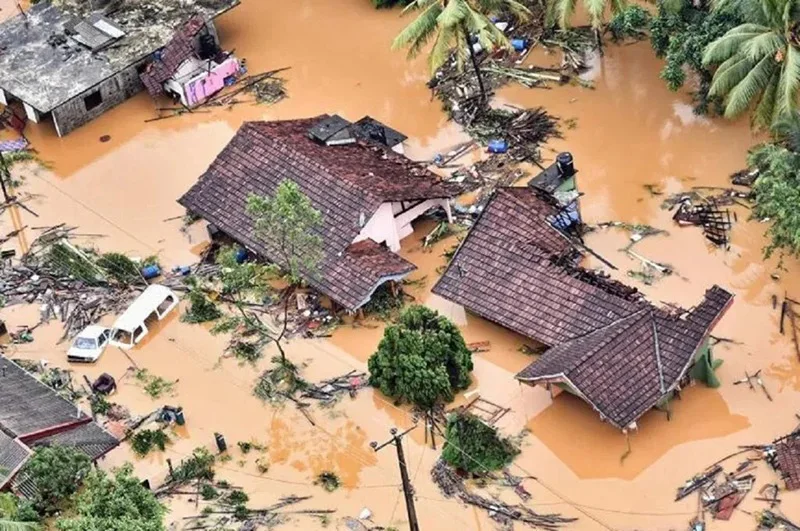
The manner in which the government succeeded in mobilising support from the international community, immediately after the devastating impact of Cyclone Ditwah, may have surprised many people of this country, particularly because our Opposition politicians were ridiculing our “inexperienced” government, in the recent past, for its inability to deal with the international community effectively. However, by now it is evident that the government, with the assistance of the international community and local nongovernmental actors, like major media organisations, has successfully managed the recovery efforts. So, let me begin by thanking them for what they have done so far.
Yet, some may argue that it is not difficult to mobilise the support for recovery efforts from the international community, immediately after any major disaster, and the real challenge is to sustain that support through the next few weeks, months and years. Because the recovery process, more specifically the post-recovery reconstruction process, requires long-term support. So, the government agencies should start immediately to focus on, in addition to initial disaster relief, a longer-term strategy for reconstruction. This is important because in a few weeks’ time, the focus of the global community may shift elsewhere … to another crisis in another corner of the world. Before that happens, the government should take initiatives to get the support from development partners on appropriate policy measures, including exceptional trade preferences, to help Sri Lanka in the recovery efforts through the medium and the long term.
Use of Trade Preferences to support recovery and reconstruction
In the past, the United States and the European Union used exceptional enhanced trade preferences as part of the assistance packages when countries were devastated by natural disasters, similar to Cyclone Ditwah. For example:
- After the devastating floods in Pakistan, in July 2010, the EU granted temporary, exceptional trade preferences to Pakistan (autonomous trade preferences) to aid economic recovery. This measure was a de facto waiver on the standard EU GSP (Generalised Scheme of Preferences) rules. The preferences, which were proposed in October 2010 and were applied until the end of 2013, effectively suspended import duties on 75 types of goods, including textiles and apparel items. The available studies on this waiver indicate that though a significant export hike occurred within a few months after the waiver became effective it did not significantly depress exports by competing countries. Subsequently, Pakistan was granted GSP+ status in 2014.
- Similarly, after the 2015 earthquakes in Nepal, the United States supported Nepal through an extension of unilateral additional preferences, the Nepal Trade Preferences Programme (NTPP). This was a 10-year initiative to grant duty-free access for up to 77 specific Nepali products to aid economic recovery after the 2015 earthquakes. This was also a de facto waiver on the standard US GSP rules.
- Earlier, after Hurricanes Mitch and Georges caused massive devastation across the Caribbean Basin nations, in 1998, severely impacting their economies, the United States proposed a long-term strategy for rebuilding the region that focused on trade enhancement. This resulted in the establishment of the US Caribbean Basin Trade Partnership Act (CBTPA), which was signed into law on 05 October, 2000, as Title II of the Trade and Development Act of 2000. This was a more comprehensive facility than those which were granted to Pakistan and Nepal.

What type of concession should Sri Lanka request from our development partners?
Given these precedents, it is appropriate for Sri Lanka to seek specific trade concessions from the European Union and the United States.
In the European Union, Sri Lanka already benefits from the GSP+ scheme. Under this arrangement Sri Lanka’s exports (theoretically) receive duty-free access into the EU markets. However, in 2023, Sri Lanka’s preference utilisation rate, that is, the ratio of preferential imports to GSP+ eligible imports, stood at 59%. This was significantly below the average utilisation of other GSP beneficiary countries. For example, in 2023, preference utilisation rates for Bangladesh and Pakistan were 90% and 88%, respectively. The main reason for the low utilisation rate of GSP by Sri Lanka is the very strict Rules of Origin requirements for the apparel exports from Sri Lanka. For example, to get GSP benefits, a woven garment from Sri Lanka must be made from fabric that itself had undergone a transformation from yarn to fabric in Sri Lanka or in another qualifying country. However, a similar garment from Bangladesh only requires a single-stage processing (that is, fabric to garment) qualifies for GSP. As a result, less than half of Sri Lanka’s apparel exports to the EU were ineligible for the preferences in 2023.
Sri Lanka should request a relaxation of this strict rule of origin to help economic recovery. As such a concession only covers GSP Rules of Origin only it would impact multilateral trade rules and would not require WTO approval. Hence could be granted immediately by the EU.
United States
Sri Lanka should submit a request to the United States for (a) temporary suspension of the recently introduced 20% additional ad valorem duty and (b) for a programme similar to the Nepal Trade Preferences Programme (NTPP), but designed specifically for Sri Lanka’s needs. As NTPP didn’t require WTO approval, similar concessions also can be granted without difficulty.
Similarly, country-specific requests should be carefully designed and submitted to Japan and other major trading partners.
(The writer is a retired public servant and can be reached at senadhiragomi@gmail.com)
by Gomi Senadhira
Features
Lasting power and beauty of words
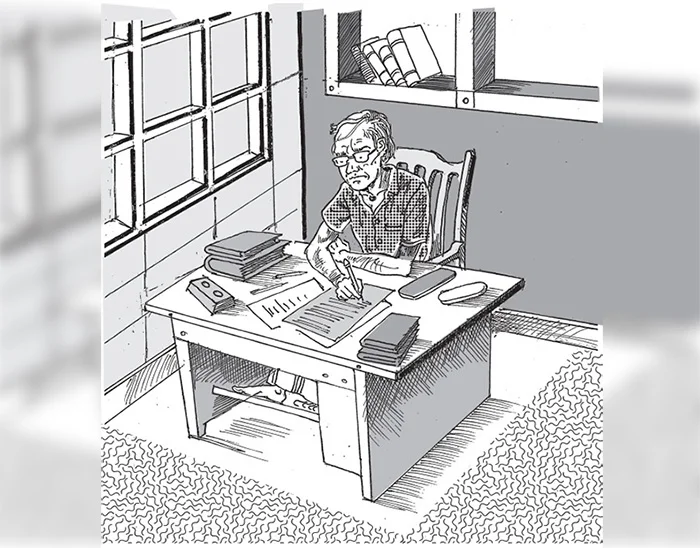
Novelists, poets, short story writers, lyricists, politicians and columnists use words for different purposes. While some of them use words to inform and elevate us, others use them to bolster their ego. If there was no such thing called words, we cannot even imagine what will happen to us. Whether you like it or not everything rests on words. If the Penal Code does not define a crime and prescribe a punishment, judges will not be able to convict criminals. Even the Constitution of our country is a printed document.
A mother’s lullaby contains snatches of sweet and healing words. The effect is immediate. The baby falls asleep within seconds. A lover’s soft and alluring words go right into his or her beloved. An army commander’s words encourage soldiers to go forward without fear. The British wartime Prime Minister Winston Churchill’s words still ring in our ears: “… we shall defend our Island, whatever the cost may be, we shall fight on the beaches, we shall fight on the landing grounds, we shall fight in the fields and in the streets, we shall fight in the hills; we shall never surrender …”
Writers wax eloquent on love. English novelist John Galsworthy wrote: “Love is no hot-house flower, but a wild plant, born of a wet night, born of an hour of sunshine; sprung from wild seed, blown along the road by a wild wind. A wild plant that, when it blooms by chance within the hedge of our gardens, we call a flower; and when it blooms outside we call a weed; but flower or weed, whose scent and colour are always wild.” While living in a world dominated by technology, we often hear a bunch of words that is colourless and often cut to verbal ribbons – “How R U” or “Luv U.” Such words seem to squeeze the life out of language.
Changing medium
Language is a constantly changing medium. New words and forms arrive and old ones die out. Whoever thought that the following Sinhala words would find a place in the Oxford English Dictionary? “Asweddumize, Avurudu, Baila, Kiribath, Kottu Roti, Mallung, Osari, Papare, Walawwa and Watalappan.” With all such borrowed words the English language is expanding and remains beautiful. The language helps us to express subtle ideas clearly and convincingly.
You are judged by the words you use. If you constantly use meaningless little phrases, you will be considered a worthless person. When you read a well-written piece of writing you will note how words jump and laugh on the paper or screen. Some of them wag their tails while others stand back like shy village belles. However, they serve a useful purpose. Words help us to write essays, poems, short stories and novels. If not for the beauty of the language, nobody will read what you write.
If you look at the words meaningfully, you will see some of them tap dancing while others stand to rigid attention. Big or small, all the words you pen form part of the action or part of the narrative. The words you write make your writing readable and exciting. That is why we read our favourite authors again and again.
Editorials
If a marriage is to succeed, partners should respect and love each other. Similarly, if you love words, they will help you to use them intelligently and forcefully. A recent survey in the United States has revealed that only eight per cent of people read the editorial. This is because most editorials are not readable. However, there are some editorials which compel us to read them. Some readers collect such editorials to be read later.
Only a lover of words would notice how some words run smoothly without making a noise. Other words appear to be dancing on the floor. Some words of certain writers are soothing while others set your blood pounding. There is a young monk who is preaching using simple words very effectively. He has a large following of young people addicted to drugs. After listening to his preaching, most of them have given up using illegal drugs. The message is loud and clear. If there is no demand for drugs, nobody will smuggle them into the country.
Some politicians use words so rounded at the edges and softened by wear that they are no longer interesting. The sounds they make are meaningless and listeners get more and more confused. Their expressions are full of expletives the meaning of which is often soiled with careless use of words.
Weather-making
Some words, whether written or spoken, stick like superglue. You will never forget them. William Vergara in his short essay on weather-making says, “Cloud-seeding has touched off one of the most baffling controversies in meteorological history. It has been blamed for or credited with practically all kinds of weather. Some scientists claim seeding can produce floods and hail. Others insist it creates droughts and dissipates clouds. Still others staunchly maintain it has no effect at all. The battle is far from over, but at last one clear conclusion is beginning to emerge: man can change the weather, and he is getting better at it.”
There are words that nurse the ego and heal the heart. The following short paragraph is a good example. S. Radhakrishnan says, “In every religion today we have small minorities who see beyond the horizon of their particular faith, not through religious fellowship is possible, not through the imposition of any one way on the whole but through an all-inclusive recognition that we are all searchers for the truth, pilgrims on the road, that we all aim at the same ethical and spiritual standard.”
There are some words joined together in common phrases. They are so beautiful that they elevate the human race. In the phrase ‘beyond a shadow of doubt’, ‘a shadow’ connotes a dark area covering light. ‘A doubt’ refers to hesitancy in belief. We use such phrases blithely because they are exquisitely beautiful in their structure. The English language is a repository of such miracles of expression that lead to deeper understanding or emphasis.
Social media
Social media use words powerfully. Sometimes they invent new words. Through the social media you can reach millions of viewers without the intervention of the government. Their opinion can stop wars and destroy tyrants. If you use the right words, you can even eliminate poverty to a great extent.
The choice of using powerful words is yours. However, before opening your mouth, tap the computer, unclip a pen, write a lyric or poem, think twice of the effect of your writing. When you talk with a purpose or write with pleasure, you enrich listeners and readers with your marvellous language skills. If you have a command of the language, you will put across your point of view that counts. Always try to find the right words and change the world for a better place for us to live.
By R. S. Karunaratne
karunaratners@gmail.com
Features
Why Sri Lanka Still Has No Doppler Radar – and Who Should Be Held Accountable
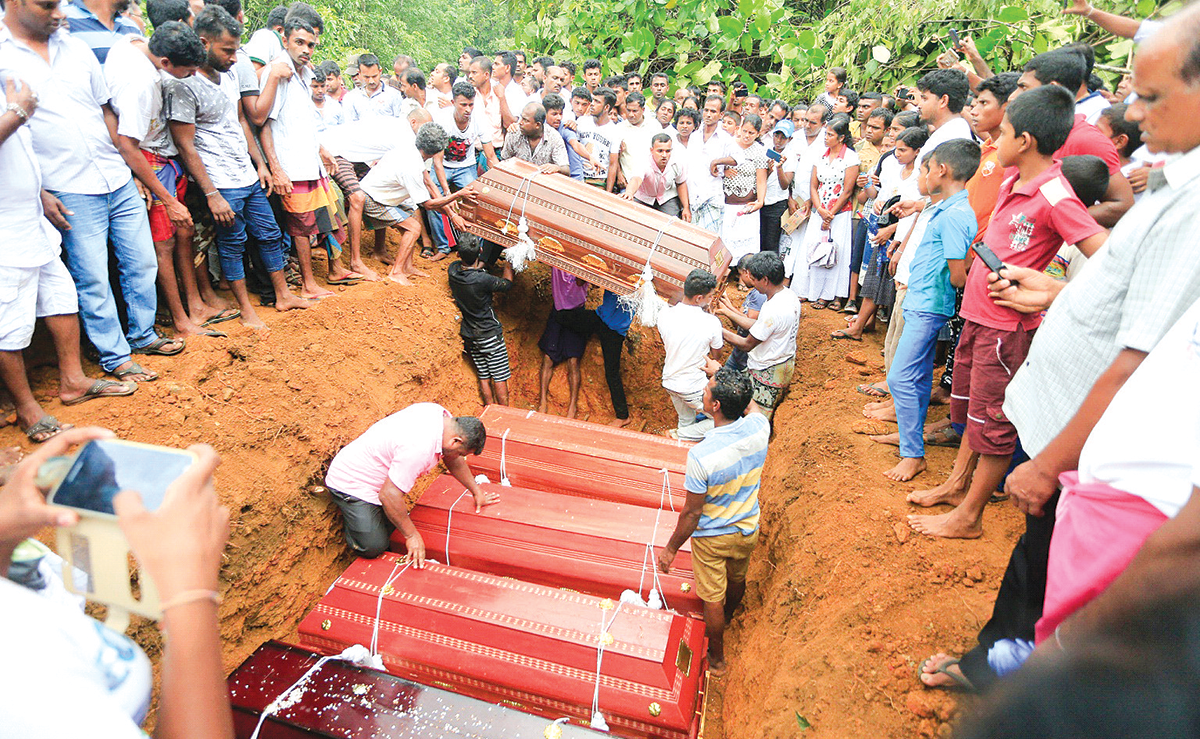
Eighteen Years of Delay:
Cyclone Ditwah has come and gone, leaving a trail of extensive damage to the country’s infrastructure, including buildings, roads, bridges, and 70% of the railway network. Thousands of hectares of farming land have been destroyed. Last but not least, nearly 1,000 people have lost their lives, and more than two million people have been displaced. The visuals uploaded to social media platforms graphically convey the widespread destruction Cyclone Ditwah has caused in our country.
The purpose of my article is to highlight, for the benefit of readers and the general public, how a project to establish a Doppler Weather Radar system, conceived in 2007, remains incomplete after 18 years. Despite multiple governments, shifting national priorities, and repeated natural disasters, the project remains incomplete.
Over the years, the National Audit Office, the Committee on Public Accounts (COPA), and several print and electronic media outlets have highlighted this failure. The last was an excellent five-minute broadcast by Maharaja Television Network on their News First broadcast in October 2024 under a series “What Happened to Sri Lanka”
The Agreement Between the Government of Sri Lanka and the World Meteorological Organisation in 2007.
The first formal attempt to establish a Doppler Radar system dates back to a Trust Fund agreement signed on 24 May 2007 between the Government of Sri Lanka (GoSL) and the World Meteorological Organisation (WMO). This agreement intended to modernize Sri Lanka’s meteorological infrastructure and bring the country on par with global early-warning standards.
The World Meteorological Organisation (WMO) is a specialized agency of the United Nations established on March 23, 1950. There are 193 member countries of the WMO, including Sri Lanka. Its primary role is to promote the establishment of a worldwide meteorological observation system and to serve as the authoritative voice on the state and behaviour of the Earth’s atmosphere, its interaction with the oceans, and the resulting climate and water resources.
According to the 2018 Performance Audit Report compiled by the National Audit Office, the GoSL entered into a trust fund agreement with the WMO to install a Doppler Radar System. The report states that USD 2,884,274 was deposited into the WMO bank account in Geneva, from which the Department of Metrology received USD 95,108 and an additional USD 113,046 in deposit interest. There is no mention as to who actually provided the funds. Based on available information, WMO does not fund projects of this magnitude.
The WMO was responsible for procuring the radar equipment, which it awarded on 18th June 2009 to an American company for USD 1,681,017. According to the audit report, a copy of the purchase contract was not available.
Monitoring the agreement’s implementation was assigned to the Ministry of Disaster Management, a signatory to the trust fund agreement. The audit report details the members of the steering committee appointed by designation to oversee the project. It consisted of personnel from the Ministry of Disaster Management, the Departments of Metrology, National Budget, External Resources and the Disaster Management Centre.
The Audit Report highlights failures in the core responsibilities that can be summarized as follows:
· Procurement irregularities—including flawed tender processes and inadequate technical evaluations.
· Poor site selection
—proposed radar sites did not meet elevation or clearance requirements.
· Civil works delays
—towers were incomplete or structurally unsuitable.
· Equipment left unused
—in some cases for years, exposing sensitive components to deterioration.
· Lack of inter-agency coordination
—between the Meteorology Department, Disaster Management Centre, and line ministries.
Some of the mistakes highlighted are incomprehensible. There is a mention that no soil test was carried out before the commencement of the construction of the tower. This led to construction halting after poor soil conditions were identified, requiring a shift of 10 to 15 meters from the original site. This resulted in further delays and cost overruns.
The equipment supplier had identified that construction work undertaken by a local contractor was not of acceptable quality for housing sensitive electronic equipment. No action had been taken to rectify these deficiencies. The audit report states, “It was observed that the delay in constructing the tower and the lack of proper quality were one of the main reasons for the failure of the project”.
In October 2012, when the supplier commenced installation, the work was soon abandoned after the vehicle carrying the heavy crane required to lift the radar equipment crashed down the mountain. The next attempt was made in October 2013, one year later. Although the equipment was installed, the system could not be operationalised because electronic connectivity was not provided (as stated in the audit report).
In 2015, following a UNOPS (United Nations Office for Project Services) inspection, it was determined that the equipment needed to be returned to the supplier because some sensitive electronic devices had been damaged due to long-term disuse, and a further 1.5 years had elapsed by 2017, when the equipment was finally returned to the supplier. In March 2018, the estimated repair cost was USD 1,095,935, which was deemed excessive, and the project was abandoned.
COPA proceedings
The Committee on Public Accounts (COPA) discussed the radar project on August 10, 2023, and several press reports state that the GOSL incurred a loss of Rs. 78 million due to the project’s failure. This, I believe, is the cost of constructing the Tower. It is mentioned that Rs. 402 million had been spent on the radar system, of which Rs. 323 million was drawn from the trust fund established with WMO. It was also highlighted that approximately Rs. 8 million worth of equipment had been stolen and that the Police and the Bribery and Corruption Commission were investigating the matter.
JICA support and project stagnation
Despite the project’s failure with WMO, the Japan International Cooperation Agency (JICA) entered into an agreement with GOSL on June 30, 2017 to install two Doppler Radar Systems in Puttalam and Pottuvil. JICA has pledged 2.5 billion Japanese yen (LKR 3.4 billion at the time) as a grant. It was envisaged that the project would be completed in 2021.
Once again, the perennial delays that afflict the GOSL and bureaucracy have resulted in the groundbreaking ceremony being held only in December 2024. The delay is attributed to the COVID-19 pandemic and Sri Lanka’s economic crisis.
The seven-year delay between the signing of the agreement and project commencement has led to significant cost increases, forcing JICA to limit the project to installing only one Doppler Radar system in Puttalam.
Impact of the missing radar during Ditwah
As I am not a meteorologist and do not wish to make a judgment on this, I have decided to include the statement issued by JICA after the groundbreaking ceremony on December 24, 2024.
“In partnership with the Department of Meteorology (DoM), JICA is spearheading the establishment of the Doppler Weather Radar Network in the Puttalam district, which can realize accurate weather observation and weather prediction based on the collected data by the radar. This initiative is a significant step in strengthening Sri Lanka’s improving its climate resilience including not only reducing risks of floods, landslides, and drought but also agriculture and fishery“.
Based on online research, a Doppler Weather Radar system is designed to observe weather systems in real time. While the technical details are complex, the system essentially provides localized, uptotheminute information on rainfall patterns, storm movements, and approaching severe weather. Countries worldwide rely on such systems to issue timely alerts for monsoons, tropical depressions, and cyclones. It is reported that India has invested in 30 Doppler radar systems, which have helped minimize the loss of life.
Without radar, Sri Lanka must rely primarily on satellite imagery and foreign meteorological centres, which cannot capture the finescale, rapidly changing weather patterns that often cause localized disasters here.
The general consensus is that, while no single system can prevent natural disasters, an operational Doppler Radar almost certainly would have strengthened Sri Lanka’s preparedness and reduced the extent of damage and loss.
Conclusion
Sri Lanka’s inability to commission a Doppler Radar system, despite nearly two decades of attempts, represents one of the most significant governance failures in the country’s disastermanagement history.
Audit findings, parliamentary oversight proceedings, and donor records all confirm the same troubling truth: Sri Lanka has spent public money, signed international agreements, received foreign assistance, and still has no operational radar. This raises a critical question: should those responsible for this prolonged failure be held legally accountable?
Now may not be the time to determine the extent to which the current government and bureaucrats failed the people. I believe an independent commission comprising foreign experts in disaster management from India and Japan should be appointed, maybe in six months, to identify failures in managing Cyclone Ditwah.
However, those who governed the country from 2007 to 2024 should be held accountable for their failures, and legal action should be pursued against the politicians and bureaucrats responsible for disaster management for their failure to implement the 2007 project with the WMO successfully.
Sri Lanka cannot afford another 18 years of delay. The time for action, transparency, and responsibility has arrived.
(The views and opinions expressed in this article are solely those of the author and do not necessarily reflect the policy or position of any organization or institution with which the author is affiliated).
By Sanjeewa Jayaweera
-

 Features5 days ago
Features5 days agoFinally, Mahinda Yapa sets the record straight
-

 News6 days ago
News6 days agoCyclone Ditwah leaves Sri Lanka’s biodiversity in ruins: Top scientist warns of unseen ecological disaster
-
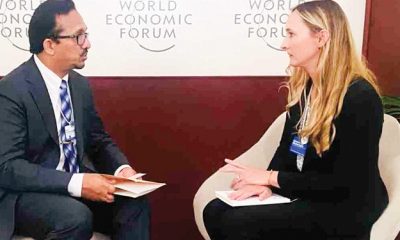
 Features5 days ago
Features5 days agoHandunnetti and Colonial Shackles of English in Sri Lanka
-
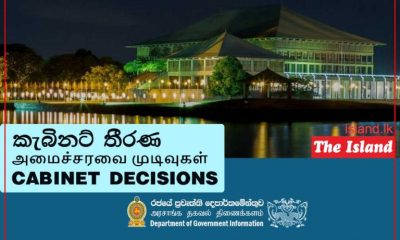
 Business4 days ago
Business4 days agoCabinet approves establishment of two 50 MW wind power stations in Mullikulum, Mannar region
-

 News4 days ago
News4 days agoGota ordered to give court evidence of life threats
-
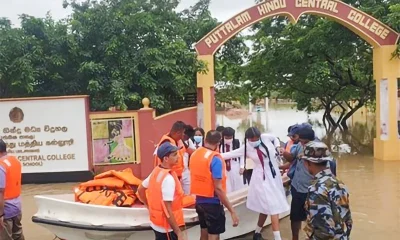
 Features6 days ago
Features6 days agoAn awakening: Revisiting education policy after Cyclone Ditwah
-

 Features4 days ago
Features4 days agoCliff and Hank recreate golden era of ‘The Young Ones’
-
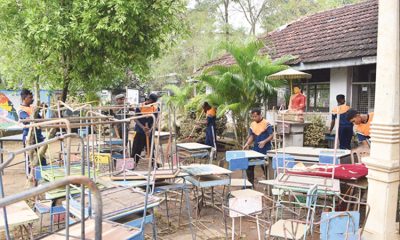
 Opinion5 days ago
Opinion5 days agoA national post-cyclone reflection period?






